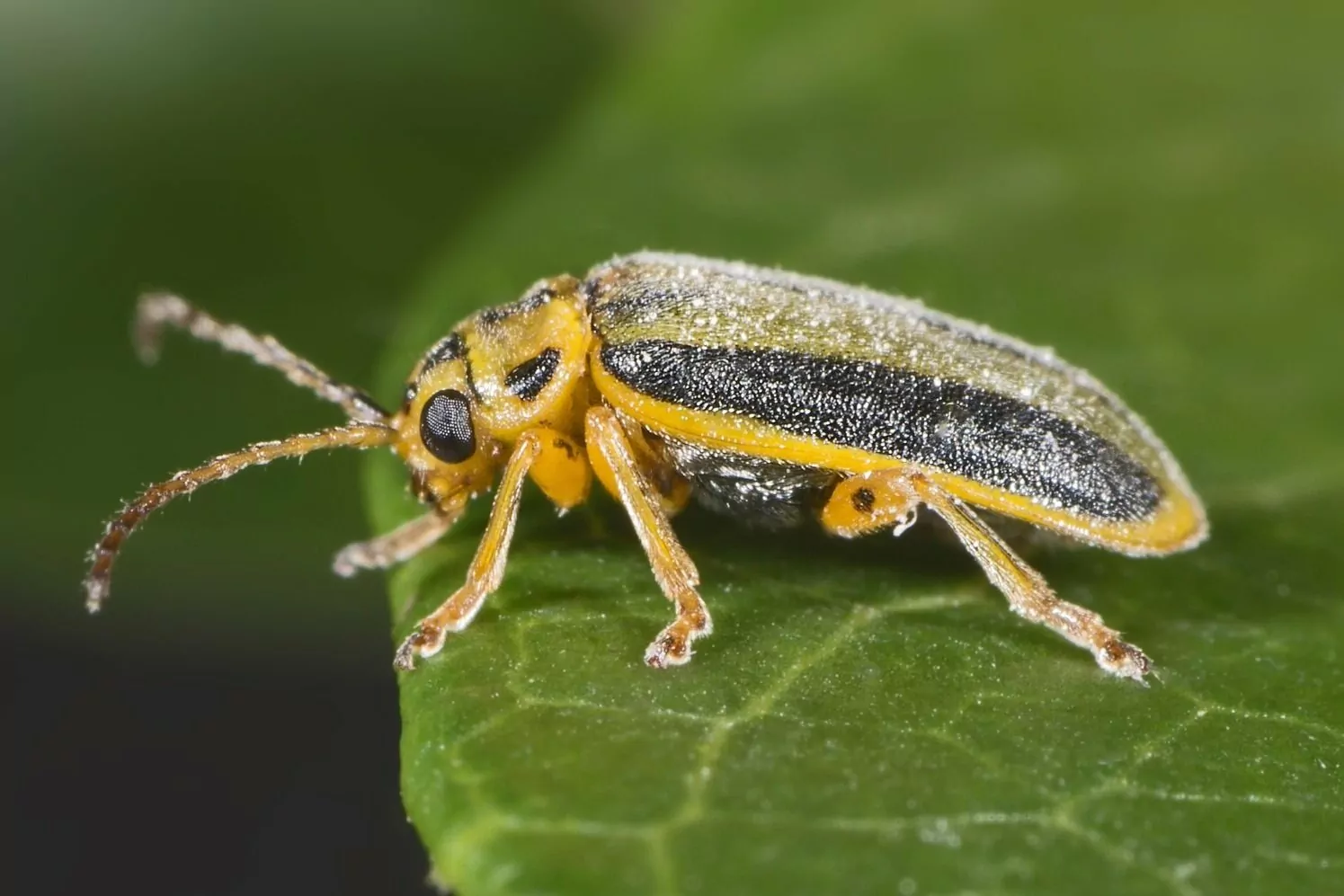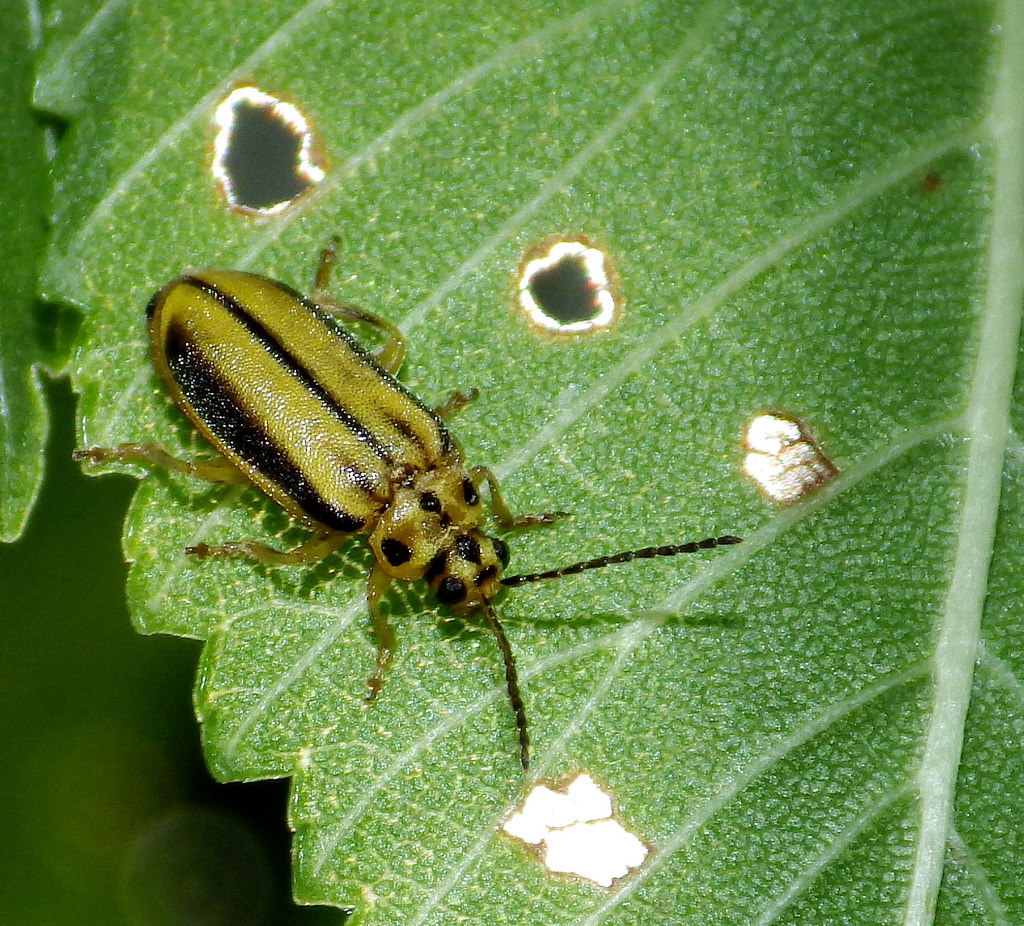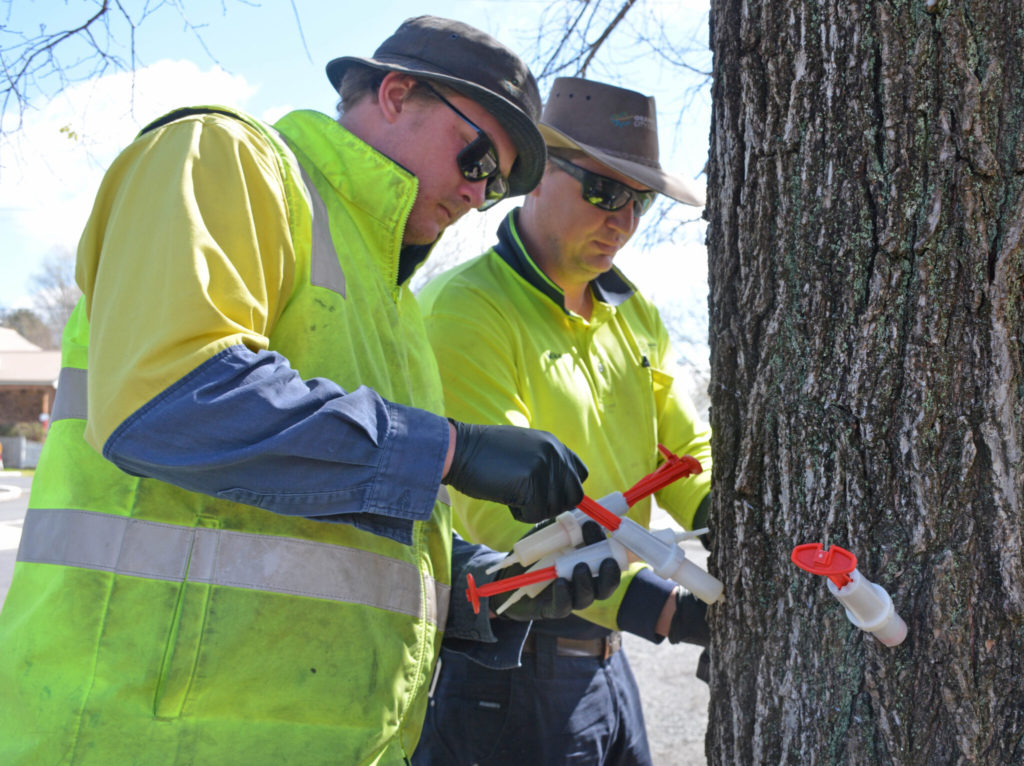
How to Prevent and Control Elm Leaf Beetle
Have you noticed damage to the leaves of your elm tree? If you leave in south-eastern Australia, particularly Melbourne or Victoria, chances are the elm leaf beetle is the culprit.
Different types of pests can harm elm leaves, but the elm-leaf beetle poses a serious danger to the trees as it feeds on elm leaves in both its adult and larval stages. Even massive, mature trees can be defoliated completely.
It’s important to know that the elm leaf insects do not transmitt the fungus that causes Dutch elm disease, which is caused by elm bark beetles. However, elm-leaf damage shouldn’t be considered a minor nuisance. The heavy leaf loss weakens trees, making them more susceptible to elm bark beetles. When elm leaf beetles try to enter homes and overwinter, they cause a substantial problem.
Contents
Identification
Adult elm-leaf beetles (Pyrrhalta luteola) are about 4-6mm in length and are greenish-yellow in colour. Two black stripes go down the wing covers’ outside borders, while a narrow stripe runs along their centre back.
They deposit yellow-white, football-shaped eggs in distinct double rows on the undersides of elm leaves. The worm-like larvae hatch black and then grow to be yellow-green. Their 4-6mm-long bodies are covered in dark pimples. If you’ve noticed these bugs on your trees while pruning them, contact a professional arborist to confirm the infestation.
Signs of Damage

Elm leaf beetle damage may first resemble Dutch elm disease. But a closer look indicates chewing signs. Adult bugs chew their way through the vegetation, causing holes. Larvae feed on the undersides of leaves, skeletonizing them and giving them a windowpane appearance. The leaves become yellow and brown before dropping prematurely.
Treatment And Prevention
Elm leaf beetle treatment entails treating the foliage as well as the tree surfaces. After eating on leaves, larvae crawl down trees and pupate near tree roots. A qualified arborist will offer you very efficient elm leaf beetle control options.
Why should I use a qualified arborist to work on my elm tree, you may ask? Because these specialists have an understanding of trees and tree care. This means an arborist can suggest the right leaf beetle control treatment to ensure both the health and structure of your trees.
Treatment options offered by arborists often include the following.
Trunk Injection with Imidacloprid
Injecting Imidacropid into the tree’s trunk is considered one of the most effective and ecologically friendly choices available. The pesticide is injected straight into the tree’s trunk. The chemical is then carried by the tree to the leaves, where it kills the beetles.
Tree trunks must be at least 200mm in diameter. Beetles just need to consume a little quantity of leaf material for the toxin to kill them; dead and dying beetles can be seen on paved surfaces. Trunk injection is not harmful to children, pets, or riparian areas.
Canopy Spraying
Foliar sprays can be used on young trees towards the end of October, but due to the scale of huge elm trees, they are generally impracticable on older trees. Foliar sprays must be administered twice a year.
Non-Chemical Control Banding
Non-chemical management banding is a non-chemical management method that can sometimes catch larvae that move down the trunk between December and early February. It includes wrapping adhesive tape around the trunk in a 20cm wide strip with the sticky side facing out. This may aid in breaking the elm leaf beetle’s lifecycle.

The bands must be put before the larvae begin to move down the trunk, which might vary according to the weather each season, so careful monitoring is required. If beetle populations are large, banding treatments may need to be repeated many times during the season.
These measures will not reduce beetle numbers or damage in the first year, but they should reduce beetle numbers and damage in succeeding years. While this procedure is healthy for the environment, it may not be successful against large infestations.
Soil Injection
Although this option exists, many arborists don’t recommend it. Soil injection involves injecting dirt beneath the tree’s drip line and may be used on trees of any diameter.
When soil moisture is low, soil injection takes up to 100 litres of water per tree. The chemical is taken up by the feeder roots and transported via the vascular system of the tree to the shoots and leaves, where it kills both the adult and larval beetles. Because the chemical moves slowly, the injections must be performed 6-8 weeks before the beetles emerge from hibernation.
Soil injection is not promoted because it harms soil flora and fauna, such as earthworms and mycorrhizal. Applications near streams and rivers, as well as near food gardens, pose special threats to invertebrates and human health since they destroy everything in the soil.
How Often Should You Treat Trees for Elm Leaf Beetle?
Experts recommend trunk injection and canopy spraying every three years; however, the treatment may last longer in some cases, especially if your tree is separated from other trees with elm beetle infestations.
A minor increase in damage can be noticed in the third year, but it is usually controlled/acceptable. Elm beetle populations can increase dramatically if left untreated for an extended period of time.
You may want to attempt trunk banding in the third and even fourth year if you’re willing to accept some harm in certain years. This method may leave your tree looking less than flawless in the fourth (or even fifth) year, but little damage to a tree every now and again will not kill it.

